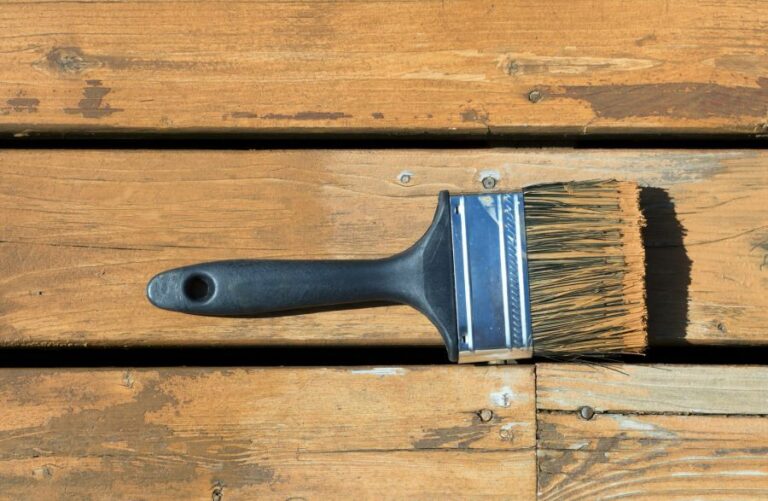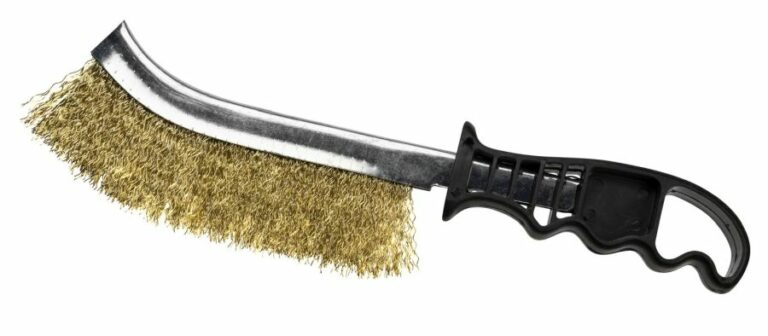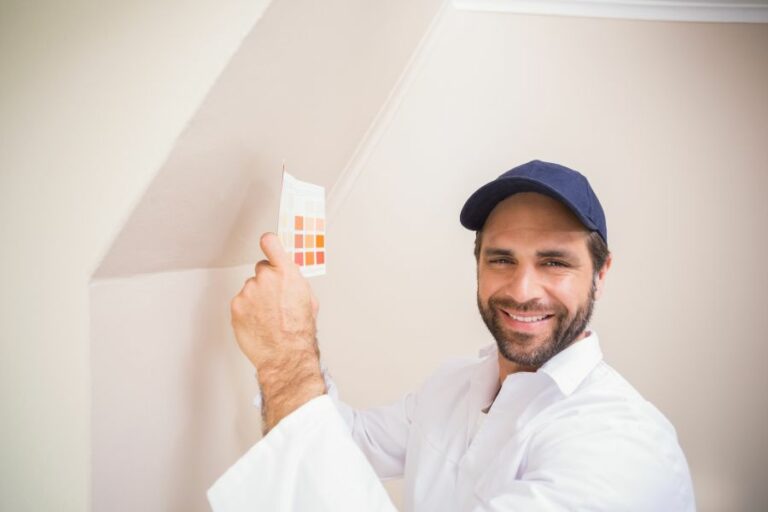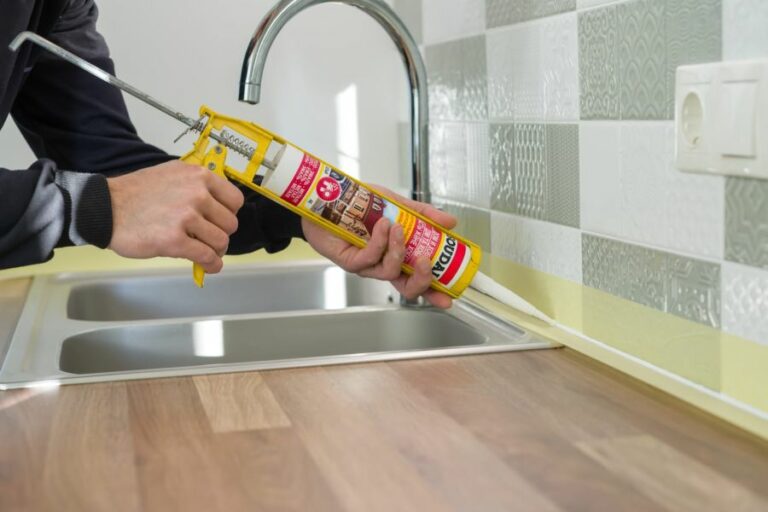Surface-Specific Primer Choices And Techniques. What Pros Say
As someone who has thoroughly researched and worked extensively with surface-specific primers, I am confident I can provide valuable insights to help you make better choices and improve your techniques. In order to achieve optimal surface bonding and performance, it’s crucial to carefully select and effectively use the right primer for your specific application.
Surface-specific primer choices and techniques:
Selecting the right primer is essential for a successful painting project. For wood surfaces, oil-based primers like Zinsser Cover Stain or KILZ Original are recommended. For metal surfaces, use primers like Rust-Oleum Stops Rust or KILZ Metal Primer. For drywall, choose water-based primers like Zinsser Bulls-Eye 1-2-3 or KILZ PVA Drywall Primer. For masonry, use alkali-resistant primers like Zinsser Watertite or KILZ Concrete & Masonry Primer. Apply primer using proper surface preparation, tools, technique, and drying time.

Delve deeper into the world of surface-specific primers and discover expert tips on selecting the perfect primer and mastering application techniques for exceptional paint adherence. Read on for exclusive insights and take your painting skills to the next level!
Contents
- 1 Selecting the Right Primer and Application Methods for Surfaces
- 2 Ideal Primer Selection for Various Surface Types
- 3 Recommended Priming Techniques for Different Surfaces
- 4 Identifying the Appropriate Primer for Your Project
Selecting the Right Primer and Application Methods for Surfaces
• Introduction to Primer Selection
Choosing the right primer for a specific surface is crucial for achieving a successful painting project. The primer serves as an intermediary layer that ensures proper adhesion between the surface and the paint. It also provides an ideal base for the paint, enhancing its durability and finish.
Remember, before applying any primer or paint, always ensure the surface is clean, dry, and free from dust, dirt, and contaminants.
• Primer Choices for Different Surfaces
– Wood Primers
For wooden surfaces, it is essential to choose a primer that penetrates the wood fibers and seals them, preventing moisture absorption and ensuring a durable finish.
Oil-based primers are highly recommended for wood, as they provide excellent adhesion and sealing properties. Some popular oil-based wood primers include:
However, water-based primers can also be used for wood surfaces, especially for interior applications or when low-VOC (volatile organic compounds) products are preferred. Some good water-based wood primers are:
– Metal Primers
For metal surfaces, it is crucial to select a primer that prevents rust and corrosion. There are primers specifically formulated for metal surfaces, such as:
Also, consider using primers with rust-inhibiting properties for metal surfaces exposed to harsh outdoor conditions. These primers typically contain zinc, which offers active protection against rust and corrosion.
– Drywall Primers
For new drywall or previously painted drywall with a smooth finish, it is recommended to use a water-based primer. These primers provide an even base for the paint, reducing the chances of patches or uneven paint appearance. Some popular drywall primers include:
– Masonry Primers
Masonry surfaces like concrete and brick require a primer that has excellent alkali resistance and sealing properties. Alkali-resistant primers prevent efflorescence and other discolorations caused by high pH levels in the masonry. Some recommended masonry primers are:
• Primer Application Techniques
Applying the primer effectively is equally important as selecting the right primer for your surface. Here are some general primer application techniques to get a professional-looking finish.
– Proper Surface Preparation
As mentioned earlier, ensure the surface is clean, dry, and free from contaminants before applying primer. Proper surface preparation significantly contributes to a successful painting project.
– Using the Right Tools
Use the appropriate tools for applying the primer, such as brushes, rollers, or spray equipment. The choice depends on the surface area, texture, and personal preference.
– Proper Technique
When applying primer with a brush, use long, even strokes. For rollers, use a “W” pattern across the surface, and overlap the wet edges for an even coat. If using a sprayer, hold it at a consistent distance from the surface, and make sure to follow the manufacturer’s instructions for optimum results.
– Proper Drying Time
Allow the primer to dry according to the manufacturer’s recommendations before applying the topcoat. Do not rush this process, as inadequate drying time can lead to poor adhesion and an undesirable finish.
• Conclusion
Selecting and applying the right primer is crucial in achieving a successful and long-lasting painting project. By considering surface-specific primer choices and proper application techniques, you’ll be well on your way to a professional-quality finish. Happy painting!
Ideal Primer Selection for Various Surface Types
One of the essential steps in painting any surface is the application of the right primer. Primer serves as a foundation for your paint job, ensuring proper adhesion and providing a consistent base for the topcoat.
• Oil-Based Primers
Oil-based primers are versatile and can be used on a wide range of surfaces, including wood, metal, and some plastics. They are known for their exceptional adhesion and durability, even on surfaces with a slight gloss.
– Recommended for Raw Wood and Weathered Metal
Raw wood benefits from oil-based primers, as they penetrate the wood fibers and provide a sturdy base for the paint.
This type of primer also prevents the tannins in the wood from bleeding into the topcoat. For weathered metal surfaces, an oil-based primer offers excellent rust inhibition, ensuring a long-lasting and rust-free finish.
The Environmental Protection Agency suggests that low-VOC (volatile organic compound) oil-based primers are better for both indoor air quality and the environment.
• Latex (Water-Based) Primers
As the name suggests, latex or water-based primers are made up of water-soluble solutions. They offer several advantages, including low odor, quick drying time, and easy clean-up with soap and water.
– Recommended for Drywall, Masonry, and Painted Surfaces
Latex primers are perfect for new or unpainted drywall as they seal the porous surface evenly, providing a consistent base for the topcoat. Due to their breathability, latex primers are also suitable for masonry surfaces as they allow moisture to evaporate.
Furthermore, they can be used on existing painted surfaces if you need to change the color or paint over the existing topcoat.
• Shellac-Based Primers
Shellac-based primers are made from a resin secreted by the lac bug and dissolved in alcohol. This type of primer is known for its quick-drying properties, excellent adhesion, and stain-blocking capabilities.
– Recommended for Stained Wood, Water Damage, and Smoke Odors
If you are dealing with wood surfaces that have visible stains or knots, a shellac-based primer helps prevent these marks from showing through the topcoat.
Also, if you have encountered water-damaged surfaces or need to mask smoke odors, shellac-based primers are effective in sealing the surface and covering up any lingering smells.
• Bonding Primers
Bonding primers are formulated to provide superior adhesion on challenging surfaces like glossy, slick, or hard-to-paint materials. They work particularly well on surfaces that normally reject conventional primers and paints.
– Recommended for Glossy Surfaces, Tiles, and PVC
If you plan on painting over a glossy surface or a surface that is difficult for paint to adhere to, such as tiles or PVC, bonding primers are the best option. They ensure a secure and uniform paint job, reducing the chance of peeling or chipping.
• Metal Primers
As the name implies, metal primers are specifically designed for metal surfaces. They help protect the metal from rust and corrosion while also providing a paintable surface.
– Recommended for Iron, Steel, and Galvanized Metal
Opt for a metal primer when working with iron, steel, or galvanized metal surfaces.
It’s crucial to choose the appropriate metal primer corresponding to the specific metal being painted, as some are specifically formulated to inhibit rust (for iron and steel) or to adhere well to the zinc coating on galvanized metal.
Now that you are familiar with the different types of primers available and their recommended surfaces, you can confidently choose the right primer for your next painting project.
Remember, the foundation is key. A high-quality primer ensures a professional and long-lasting paint job. Good luck and happy painting!
Recommended Priming Techniques for Different Surfaces
– Understanding the Role of Priming in Surface Preparation
Surface preparation is a crucial step to ensure a successful, long-lasting, and professional finish in painting projects. One major aspect of surface preparation is the application of primer. Priming involves the application of a preparatory coat on a material before painting.
Primers are specially designed to adhere to the surface of the material and create a smooth, uniform base for paint.
– The Importance of Priming
Priming offers several advantages for painting projects. Let’s examine some of the key reasons to use primer:
Enhanced Adhesion
Primer provides an excellent bond between the surface material and the paint, ensuring a strong, long-lasting finish. Without primer, the paint may not adhere properly, leading it to chip, flake, or peel.
Improved Appearance
By priming surfaces before painting them, you ensure a smooth, uniform appearance. It helps to hide imperfections in the surface and prevents stains, uneven colors, and variations in surface texture from showing through the topcoat.
Increased Durability of Paint
The right primer can provide additional protection against moisture, cracking, and corrosion. This is particularly important for surfaces exposed to the elements, such as exterior walls, decks, or metal structures.
Cost Savings
Primer is generally less expensive than paint. By applying primer to create a uniform, smooth surface for your paint, you may need fewer coats of paint, saving time and money.
– Identifying when Priming is Necessary
It is important to assess the surface material and conditions to determine if priming is necessary for a particular painting project. Here are some considerations:
New, Uncoated Surfaces
Priming is highly recommended for new and uncoated surfaces, such as new drywall, unpainted wood, or untreated metal. Primers are specially formulated to bond with these materials, creating a durable base for paint.
Repairing Damaged Surfaces
When patching or repairing a surface, priming is essential to ensure a seamless, uniform appearance. It helps blend the repaired area with the rest of the surface and prevents the patched area from showing through the paint.
Stain and Odor Blocking
If the surface has stains, watermarks, or strong odors, priming can help seal the affected area, preventing these issues from affecting the final painted appearance. Using a stain-blocking or odor-blocking primer is especially important in these cases.
Changing Colors
When drastically changing the color of a surface, priming can help provide better coverage and reduce the number of paint coats needed. Primers made with a tint similar to the new paint color can also help achieve better color accuracy.
– Best Practices in Priming
Follow these steps to ensure proper priming of surfaces for optimal results:
Surface Cleaning and Repair
Before priming, thoroughly clean the surface to remove dirt, dust, and grease. If any repairs or patching are needed, address these issues before applying primer. Remember, a clean and smooth surface will promote better adhesion of the primer.
Selection of Primer
Choose a primer specifically formulated for the material and conditions of the surface. Consult with experts in paint stores, read product labels, or visit websites like The Paint Quality Institute to get reliable information on primer options.
Application Technique
Apply primer using the appropriate tools for the surface, such as brushes or rollers. Avoid over-application, as this may cause drips or an uneven finish. Refrain from immediately painting over a damp primer. Allow the primer to dry fully before applying paint.
Testing a Small Area
When possible, test your primer on a small, inconspicuous area of the surface first, to ensure good adhesion and satisfactory results. If the primer peels or cracks, it may be necessary to reevaluate your priming process or choose a different primer.
• Conclusion
In summary, priming surfaces are essential in achieving a professional-looking, long-lasting paint finish. Understanding when to prime, selecting the right primer, and following the best practices in priming will ensure your painting project’s success.
Identifying the Appropriate Primer for Your Project
A primer is an essential element in achieving a professional and long-lasting finish in your painting projects. But, choosing the right kind of primer can be quite confusing for many people.
• Types of Primers
– Oil-Based Primers (Alkyd Primers)
Oil-based primers, also known as alkyd primers, are highly versatile and can be used on a wide range of surfaces. They provide excellent adhesion, and superior stain-blocking capabilities and are highly effective in sealing porous surfaces.
Recommended for: bare wood, interior and exterior metal surfaces, masonry surfaces, and over existing oil-based paints.
The Environmental Protection Agency recommends using oil-based primers with caution due to their high volatile organic compound (VOC) content.
– Water-Based Primers (Latex Primers)
Water-based primers, also known as latex primers, are suitable for most surfaces and are known for their low VOC content, easy clean-up, and quick drying times.
Recommended for: new drywall, galvanized metal, bare softwoods, and over existing latex paints.
– Shellac Primers
Shellac primers have been around for centuries and are recognized for their exceptional stain-blocking properties and ability to seal out odors. They also offer great adhesion and quick drying times.
Recommended for: severe water and smoke damage, interior bare wood with knots, and surfaces with heavy stains and odors.
• Choosing the Right Primer for Your Painting Project
– Assess the Surface
The first step in selecting the appropriate primer is to examine the surface you intend to paint. Consider the following factors:
- Surface material (wood, metal, masonry, etc.)
- Surface condition (stained, porous, peeling, etc.)
- Previous coatings and paint types (oil-based or latex)
– Consider the Purpose of the Primer
Primer selection also depends on the specific purpose it must serve in your painting project. Keep in mind these common scenarios:
- Sealing porous surfaces: Choose an oil-based or high-quality latex primer.
- Blocking stains: Opt for oil-based, shellac, or stain-blocking latex primers.
- Covering dark colors: Use a high-hide latex primer for optimal results.
- Preventing rust: Choose a rust-inhibiting metal primer.
– Factor in Environmental and Safety Considerations
When selecting a primer, it’s important to consider the environmental impact and safety measures. Some considerations are:
- VOC content: Look for low-VOC or zero-VOC primers for indoor projects.
- Odor: Water-based and low-VOC primers generally have less odor compared to oil-based and shellac primers.
- Cleanup and disposal: Water-based primers are easiest to clean, while oil-based and shellac primers require special solvents and disposal methods.
– Consult with Paint Professionals
If you’re still unsure about which primer to choose, consult with painting professionals or visit reputable paint stores for guidance. These experts can help you navigate through the vast options available and recommend the most suitable primer for your specific project.
• Final Thoughts
In conclusion, understanding the different types of primers and their applications is crucial in achieving a professional finish in your painting projects. It’s essential to assess your project’s specific requirements to select the most suitable primer for superior results.
Taking the time to research and consult with professionals can save you time, money, and frustration in the long run. By investing in the right primer, you set the foundation for a long-lasting and visually appealing outcome.







